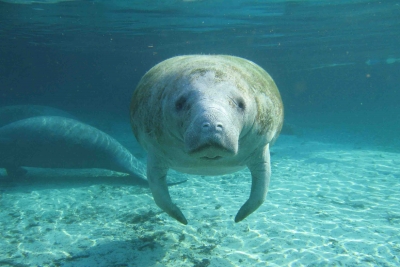
- At least 841 manatees have died in Florida, the U.S., till this July, surpassing the previous record set in 2013 when 830 manatees died of exposure to an influx of “red tide” neurotoxin-producing algae. The Florida Fish and Wildlife Conservation Commission (FWC) reports the increase in deaths as extreme and more than twice the number recorded in same period last year, when 354 manatees died (637 over the whole year).
- According to the FWC, most of the deaths have occurred in the Indian River Lagoon, on the eastern side of the Florida Panhandle – a popular winter home for Florida manatees (a subspecies of the West Indian manatee), mostly found along the coast of Florida, but also as far north as Massachusetts or as far west as Texas in the U.S. Indian River Lagoon, once a busy estuary spanning 250 km of seagrass, is now a polluted ecosystem where an estimated 58% of grass has died off since 2009.
- With the arrival of warm summer waters, most manatees have now dispersed from overcrowded areas with low seagrass to more plentiful coastal regions. However, watercraft-related woundings have now replaced starvation as the leading cause of manatee deaths-in a typical year, boat collisions cause around a quarter of all manatee fatalities.
- There were around 7,520 manatees in Florida, before this year’s mortality surge, meaning more than 11% of the population has been wiped out in just six months. Manatee experts fear a return to the near-extinction levels of the 1970s, when only a few hundred remained.
- The Florida manatee (Trichechus manatus latirostris), affectionately referred to as “sea cow”, is a gentle obligate herbivore that can move freely between freshwater and saltwater, predominantly living off a diet of various seagrasses.
- A healthy manatee will consume 10% of its body weight in seagrass every day-for a 450-kg mammal, that means 45 kg of grass per day. Without ample supplies, manatees will overgraze the same areas (preventing seagrass from regrowing), become malnourished, and eventually starve to death.
- Seagrasses will continue to die if sunlight is shaded out by toxic algae blooms that feed off nitrogen and phosphorus from increasing water pollution brought about by neglected septic tanks, municipal drains spewing out raw sewage, and chemical pollutants found in fertilizer – a worsening problem from increasingly active hurricane seasons, which wash huge amounts of it into waterways.
Picture Credit : Google




